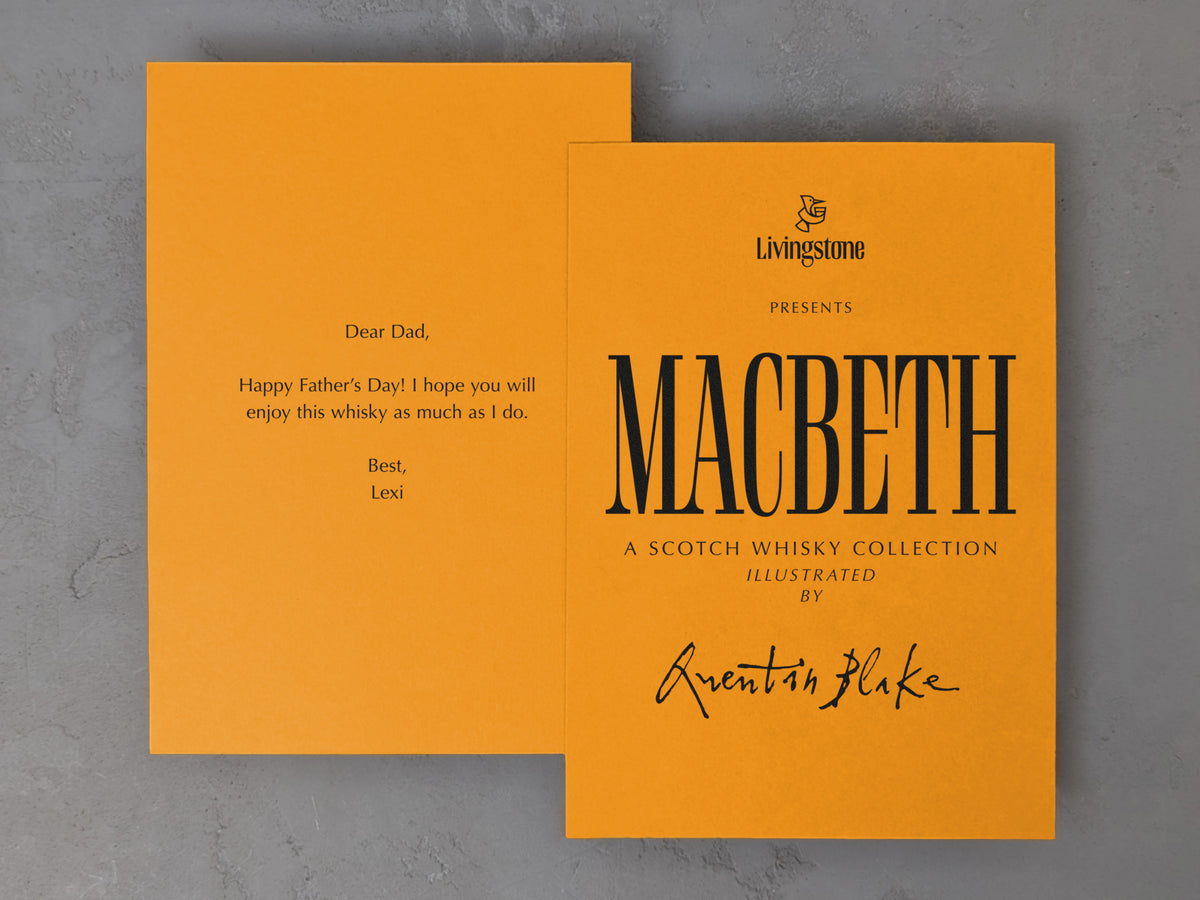Dave Broom
Whisky Profiles and Character Notes
Where did you start with this project?
After Lexi showed me his idea, the first thing I did was re-read the play. The story of Macbeth is so familiar and part of our lives, but I felt it worth reminding myself.
I then did a deeper dive, considering how the characters behave and develop throughout the play. I thought too about the numerous ways Macbeth has been interpreted on stage and screen - Orson Welles’ raw and brutal 1948 cinematic adaptation, Akira Kurosawa’s Throne of Blood a decade later…
I then started to apply the play to whiskies.
How did you approach writing character descriptions for the whiskies?
The whiskies had to be entirely character led: a reflection of the personalities, aligned to their role and the atmosphere they create in the play.
Therefore, as I set out to write the profiles for Elixir Distillers, the guiding principle was being true to the text, discovering genuine indications within the characters for potential whisky styles and flavours - and this had to lead to whiskies of excellent quality, each standing distinct from the others, with no repeats. This was not simply an academic exercise, or labelling project.
For the whiskies to absorb the characters of their counterparts in the play, I studied speeches, considered geographical connections, and searched for distilling and blending analogies – all the while thinking how to make the character groupings work together, and how to differentiate – whether by status, a physical or emotional characteristic…
Given that you know Macbeth inside out and your encyclopaedic knowledge of whisky, how did you set about expressing the characters of Macbeth as flavours profiles?
Flavours true to the lead characters were most obviously divided into light and darkness – the question was how to signify this in whisky?
Smoke lends itself to creating the impression of wildness and danger, a straying into the dark side; the blood and gore of this tragedy brought to mind rich, sherried whiskies, and light and ‘goodness’ felt best conveyed by refill American oak: golden, honeyed, soft, gentle and sweet.
Did you specify distilleries?
No, it was important that the characters not distilleries determined the whisky selection. The notes had to deliver a vivid character portrayal and enough ideas to set Elixir Distillers head blender Oliver Chilton off on a treasure hunt, understanding what he was looking for and why from distilleries the length and breadth of Scotland as he cast the whiskies for each role.
Whilst many distilleries are named on the bottles, we decided against this for the characters unnamed by Shakespeare – The Witches and The Murderers – revealing only the region to retain the sense of mystery and intrigue.
Which were the most challenging characters to articulate?
The speeches and potions of the witches, the most famous blenders, were almost written in language we would use for whisky already. And in her first speech, the First Witch speaks of her cursing a sailor, a clue to the style of whisky being maritime.
In contrast, there are a number of characters throughout Macbeth who are present, but with few references to their words or deeds. This made them harder to define or differentiate. It required searching around them, deducing their characters from the mood of the scenes in which they appear – maybe lurking in the background or fleeing in haste - and the acts that were unfolding at the time.
What was the intention behind the character notes?
We agreed they should be neither solely about the character in the play nor traditional tasting notes. Combining them feels in the spirit of the project. Here’s Angus, for example: “Much has been seen and any sweetness which has been gathered in, will be balanced by the darker acts of war, plotted under paraffin light. There is spice in the tales told.”
I also chose accompanying quotations from the play to appear on the bottle – not always the most famous words, but the ones that I felt got to the nub of that character and consequently the whisky.
How would you summarise the experience of creating Macbeth as a whisky collection?
Quentin’s drawings are brilliant - they unite the characters from the play with the character notes of the whiskies. And the whole process felt quite theatrical, working with Elixir Distillers to cast and produce whiskies as the characters of Macbeth based on Shakespeare’s writing, with Livingstone and Sir Quentin Blake as the artistic directors responsible for set and wardrobe.























